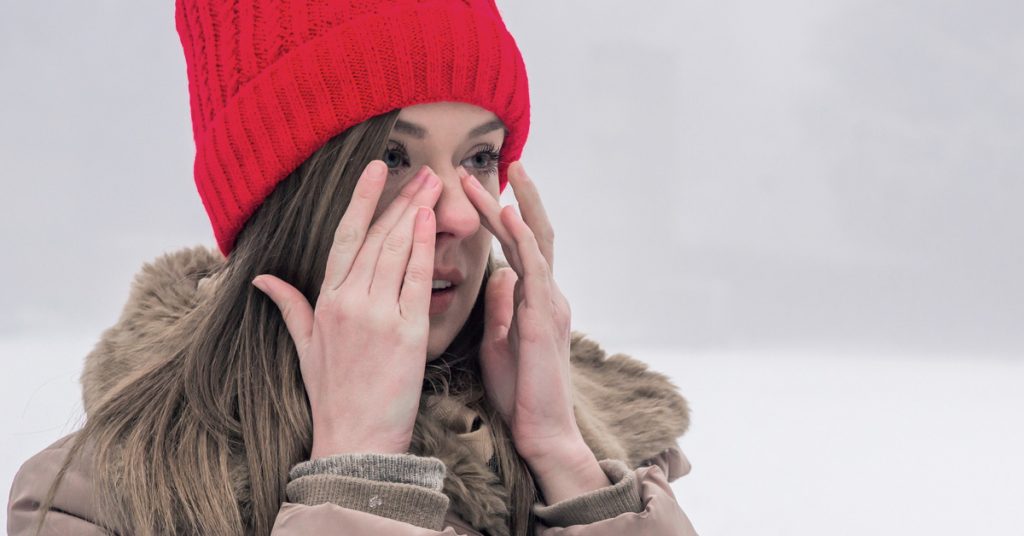If you suffer from frequent or chronic sinusitis, you probably know first-hand that weather affects sinuses. Those with springtime sinusitis often associate their symptoms with warmer temperatures and the reemergence of pollen in the air. But winter presents its own set of challenges for sinus sufferers.
- Dry air – Minnesota’s winter air is dry. And because it’s cold, we run our furnaces all winter to keep us warm – drying out the air even more. The lack of moisture in the air can dry out the membranes in our noses, causing mucus to thicken, and potentially leading to congestion, blocked sinuses, and infection. Be sure to keep an eye on the humidity level in your home and consider a humidifier if the air is consistently dry.
In an ideal world, indoor humidity of 40-60% is desirable for comfort and health. But keeping the air that moist over the course of a winter is more than most Minnesota homes can handle. The following recommendation, supplied by the Minnesota Department of Public Service, is based on a double-glazed window and an indoor temperature of 70 degrees. Notice that the lower the outdoor temperature, the lower the indoor humidity should be.
Recommended humidity settings
| Outside temperature | Indoor humidity settings |
| 20 to 40 degrees | 40 percent |
| 10 to 20 degrees | 35 percent |
| 0 to 10 degrees | 30 percent |
| 10-below to 0 | 25 percent |
| 20-below to 10-below | 20 percent |
| Lower than 20-below | 15 percent |
- Air pressure – When wintery weather fronts pass through, changes in barometric pressure (air pressure) can increase pressure in the air-filled sinus cavities. That causes pressure or pain. Not everyone will experience these changes, but we age, responses to weather changes become more noticeable. If you find this to be an ongoing issue, Oakdale ENT physicians can offer recommendations on over-the-counter remedies to relieve sinus pain, corticosteroid nasal sprays to help prevent symptoms or other treatment options for long-term relief.
- Dust and dander – We all like to curl up under cozy blankets when the temperature drops. However, it’s not uncommon for these linens to get overlooked on laundry day and gather dust – a common trigger of sinusitis. Pet dander, another trigger, can accumulate more quickly in the winter as our pets spend more time indoors on carpets and rugs, perhaps even sharing that cozy blanket. Make sure winter bedding is dry and dust-free, and create a pet-free zone on your bed to minimize dander. Also, be sure to vacuum often, reaching all the places where dust and dander may collect, including bed skirts, curtains, lampshades, and under furniture and appliances.
- Furnaces, heaters, and fireplaces – We know that furnaces dry out the air and our nasal passages, and electric heaters do the same thing. What about a crackling fire to stay warm? Maybe not the best option. The smoke from a wood-burning fire can irritate the nasal passages. In addition to keeping the air moist, it’s important to be sure it’s as clean as possible as well. Consider a HEPA (high-efficiency particulate air) filter to keep the air clean, and as weather allows, open windows and doors to air out the house.
- Cold and flu – Cold and flu season, for many, means sinus season. Could a simple stuffy nose result in a sinus infection? Yes. When a cold causes inflammation, swelling, and congestion, it’s not uncommon for the sinuses to become blocked, unable to drain. If this lingers, the sinuses can become infected. If the congestion and pain don’t clear up, be sure to consult with one of our physicians.
If sinusitis is giving you the winter blues, schedule an appointment with one of our physicians.
